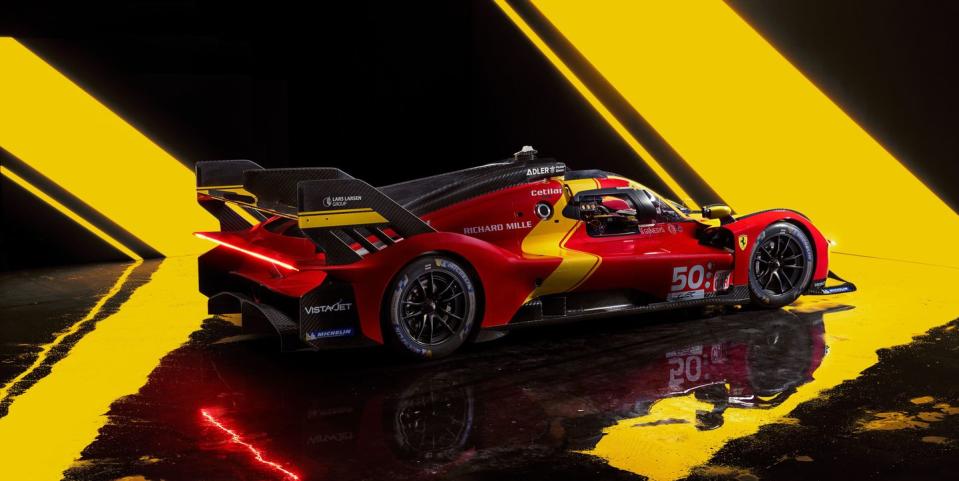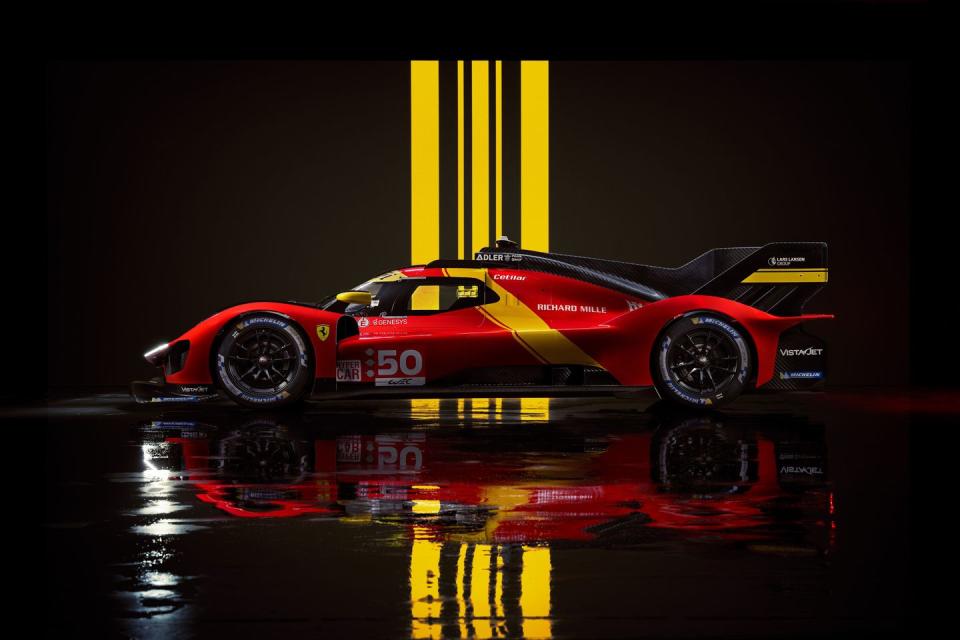Ferrari 499P Le Mans Hypercar Set to Take On the 24 Hours in 2023

Ferrari officially unveiled its 499P Le Mans Hypercar and details of the car’s powertrain.
Ferrari officially returns to the 24 Hours after 50 years away.
The Italian automaker holds 20 world endurance titles and nine overall victories at the 24 Hours of Le Mans.
Ferrari has officially unveiled its new 499P Le Mans Hypercar along with previously undisclosed technical details—including of its all-wheel drive V6 hybrid drivetrain—ahead of the Italian carmaker’s return to top-flight Le Mans competition next year. It marks Ferrari’s comeback to Le Mans for the first time in 50 years, when the 312P last raced, and a bid to add to its nine outright wins.
To learn more, Autoweek attended the 499P’s reveal at Finali Mondiali, which closes Ferrari’s single-marque race calendar at Imola this weekend.
Named after its individual cylinder capacity and suffixed ‘P’ for race prototype, two examples of the closed cockpit 499P will contest the 2023 World Endurance Championship, with the 100th running of Le Mans being the calendar’s mid-season climax. Ferrari will also assess a customer racing programme for subsequent seasons and isn’t ruling out IMSA entries from 2024 onwards.
The Italian manufacturer will face rivals Peugeot, Glickenhaus, and Toyota in the Le Mans Hypercar class, which has allowed the Italian manufacturer far greater freedom within the FIA and ACO regulations (and at significantly greater cost) than rivals such as Porsche and BMW who use a spec chassis and hybrid hardware in LMdH. Balance of Performance adjustments will, however, aim to level the playing field between the two top classes.

“[Hypercar] allows a manufacturer to develop each component, and that is essential for us,” explains Ferdinando Cannizzo, boss of Ferrari GT track car development. “This is our car, so basically we can optimize everything we want—the chassis, the suspension—and transfer all the knowhow we have collected in GT racing and Formula 1, which was not possible otherwise.”
Ferrari’s new challenger is a clean-sheet design built around a full carbon-fiber monocoque. It locates a 3.0-liter V6 behind the driver as a stressed member and uses twin turbochargers mounted ‘hot’ between a 120-degree vee. The basic specification is closely derived from Ferrari’s new 296 GTB hybrid V6 supercar, if with crucial engineering revisions.
The V6 configuration was chosen not only due to its favorable weight and packaging potential, but also because it mirrored Ferrari road-car development in the 296 GTB and complemented parallel development of the upcoming 296 GT3, speeding knowledge transfer.
“This engine is the same architecture as the 296, but it is a brand new engine,” stresses Cannizzo, “All the technical solutions are specifically for this car, this level of power and these kind of races—the turbochargers are completely different and the weight saving we have made for instance is huge.”
Ferrari quotes 671 hp at the rear wheels for the engine alone, which is bolted to a seven-speed sequential transmission. A 900-volt hybrid battery system is packaged immediately behind the driver, and a single electric motor with single-speed transmission drives the front wheels above certain speeds, as defined by regulations and weather conditions. The brake-by-wire carbon brake system harvests kinetic energy from the front axle under braking, storing it in the battery ready for redeployment.

 Yahoo Autos
Yahoo Autos 